There is no better time to vacation in New England than October as the fall colors peak. This was my plan, and successfully executed. It has been a pretty good fall, except that because of the lack of summer rain the maples have failed to exhibit stunning reds. This past Thursday, camera in hand, we visited Chesterwood, the summer home and studio of sculptor Daniel Chester French, most famous for his Minuteman Memorial on the Concord Bridge, in Concord, MA, and his colossal Lincoln Memorial in Washington, DC. On Friday, we visited architect Phillip Johnson’s Glass House in New Canaan, CT, and then on Saturday the Roosevelt and Vanderbilt historic sites in Hyde Park, NY.
I took some images that I am really happy with at the Glass House. Unfortunately, I cannot show these here. This is because the site’s photography policy allows photographing for personal use and not for publication (like putting it here) or sale.
The good news is that the National Historic sites, run by the United States Parks Service, now allow photography, as long as you don’t use flash, and they don’t specify private use only. I don’t know whether this is an admission that everyone now carries a cell phone, making it impossible to prevent pictures being taken or whether it is a tilt to a more democratic egalitarian sense of these objects belonging to the people; so let the people photograph them. In any event, the effect is that photographic life is good!
The bad news is that they’ve turned off the lights to protect artifacts from the damaging effects of light. So the whole affair becomes an exercise in how to take photographs in the dark. Oh yes, did I mention no tripods allowed? And if you lean against the wrong wall or door to steady your camera you might set off an alarm.
I suddenly found myself obsessed with photographing chandeliers and candelabras. This is all fine until you realize that you are photographing, well, light fixtures! Still, you can get some very pleasing range of light images, and it is challenging to strike the dynamic range just right so that you get both shades of shadow at the low end and shades of white at the high end. There is nothing more annoying, like fingernails on a blackboard, than a screaming white, seeming to burn a hole in your picture.
Another point that I have learned is that these modern digital SLRs really do enable shooting at ISOs as high as 6400 without introducing too much graininess (sometimes). This really helps you to overcome defocusing caused by hand shake. However, you can pretty clearly see this graininess when you blow up these pictures (here) to full size.
A type of scene that I really like to photograph is illustrated in Figure 6. This is Franklin Roosevelt’s bedroom at Hyde Park. Note the small bed where his valet slept.. The room was flooding by a delicate diffuse sunlight and again the challenge was pulling subtlety out of both the blacks and the whites. The danger of burning a hole is again present. A similar image and challenge is posed by Figure 7, which shows the skylight and balcony at the Vanderbilt’s Hyde Park mansion. All of these images are really helped by having 14-bits of dynamic range. This is how you go from black to white and get everything in between.
So in the end it was an education, if not terrific, picture taking day. It is always good to have the practice of anticipating the light and overcoming the challenges that the light offers. Like Pooh-Bear you’ve got to have a good think about the problems lighting presents and think about how to overcome them. That way when you’ve really got an opportunity to grab an image under adverse conditions you’re ready.

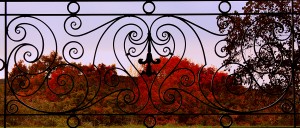
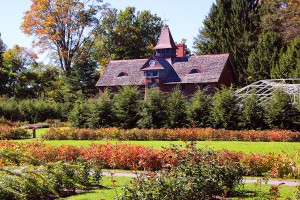
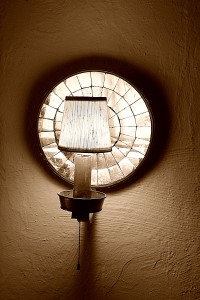
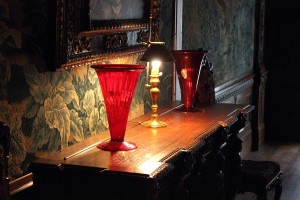
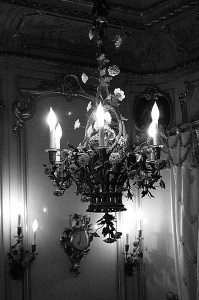
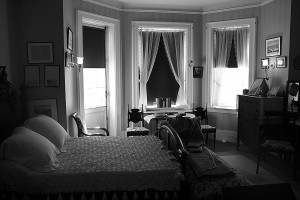
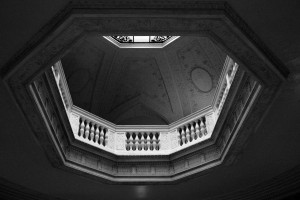
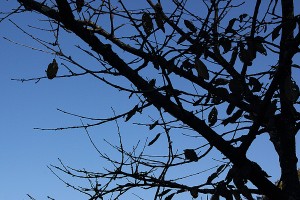
The tonal range of the b&w photos is outstanding as well as the mood created I particularly like the FDR bedroom.
Thanks. I am pretty pleased with the tonal range as well. BTW this was taken with the original 18 mm to 55 mm Canon lens. The sharpness is preferable to my other lens.
The framing of Vanderbilt mansion is fabulous. I can almost imaging the rusty color of the gate frame juxtaposed with the fall color background.
Rajan
Thanks, Rajan
That was a fun picture to takw!
David